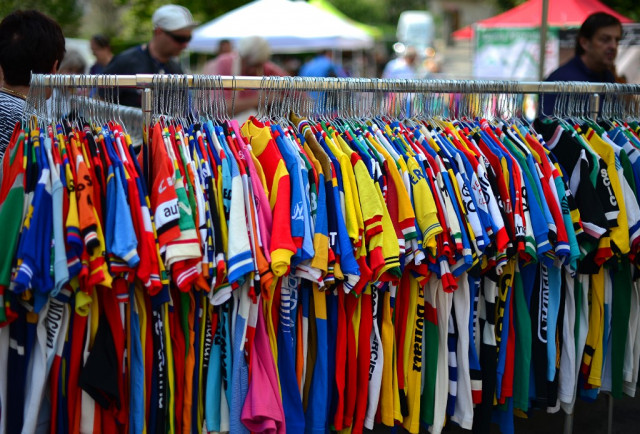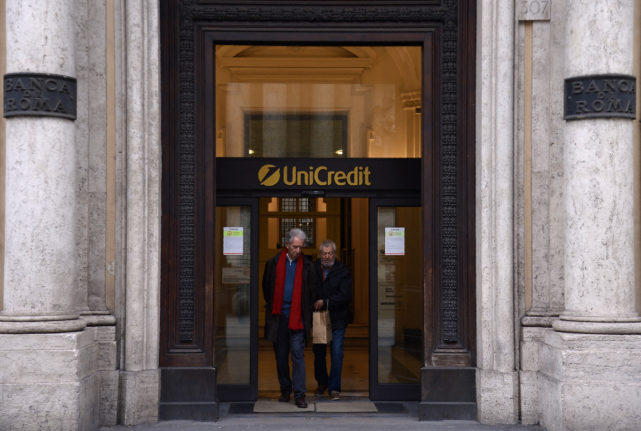By law, shops in Italy are allowed only two big sales a year – one in winter, one in summer. But what they lack in frequency they make up for in size.
READ ALSO: What changes about life in Italy in July 2022
Discounts are deep and sales last for several months: the summer sale kicks off in early July and in many parts of Italy, you’ll still find them going well into September.
When do the summer sales start?
Here’s when the 2022 sales officially begin and end in each Italian region:
- Abruzzo: July 2nd-August 31st
- Basilicata: July 2nd-September 1st
- Calabria: July 2nd-September 2nd
- Campania: July 2nd-August 31st
- Emilia-Romagna: July 2nd-September 30th
- Friuli-Venezia Giulia: July 2nd-August 31st
- Lazio: July 2nd-August 13th
- Liguria: July 2nd-August 16th
- Lombardy: July 2nd-August 30th
- Marche: July 2nd-September 1st
- Molise: July 2nd-August 31st
- Piedmont: July 2nd-August 27th
- Puglia: July 2nd-September 15th
- Sardinia: July 2nd-September 3rd
- Sicily: July 2nd-September 15th
- Trentino-Alto Adige/South Tyrol: July 2nd-August 8th
- Tuscany: July 2nd-August 31st
- Umbria: July 2nd-August 31st
- Valle d’Aosta: July 2nd-September 30th
- Veneto: July 2nd-August 31st
Note that some large retail chains in recent years have begun to advertise sales outside of these periods – but discounts in these cases will be reserved for shoppers who are part of a loyalty or membership scheme.
When’s the best time to go?
That depends on your priorities: shops are likely to be packed on the opening Sunday, so anyone who doesn’t do well in crowds is advised to wait at least a few days – ideally until mid-week.
Cuts will continue as the sale goes on, so die-hard bargain hunters will find the cheapest prices at the end. But of course the earlier you go, the bigger the selection you’ll find.
What’s on sale?
Anything and everything. But the main attraction is seasonal products like clothing, which shops have an incentive to get rid of quickly.
Italian law states that the items on sale must come only from the season just gone, rather than things that have been sitting on the shelves for months (though the rule is hard to enforce).
When it comes to fashion, that means you’ll find chiefly stock from autumn-winter collections on sale.

Photo: Marco Bertorello/AFP
How much can you expect to get off?
It varies from shop to shop, but discounts typically start at around 20-30 percent and can rise to as much as 70 percent.
By law shops must mark the reduced price and the original price so you can tell how much of a bargain you’re really getting.
Are there any sales scams to watch out for?
Consumer rights groups advise customers to be wary of discounts of 70 percent and more: they can be a sign that either the item was overpriced to begin with, or is old inventory from a previous year.
Shops are also supposed to display discounted items separately from non-reduced stock to avoid confusion, but check labels carefully just in case.
Anything that’s labelled as reduced must be sold at the new price: you can report the seller to the police if they attempt to give you less than the advertised discount.
Some sellers have also been known to claim that you can only pay for a sale item with cash: not true. Any shop that usually takes cards is obliged to do so during the sales, too. And however you pay, make sure you get a receipt.

Photo: Andreas Solaro/AFP
What’s the returns policy?
Sales or no, by law shops in Italy are only obliged to take back items that have a defect, such as a broken zip or open seam. Even then there’s no guarantee you’ll get your money back: shops can offer to repair or substitute the item, or give you only a partial refund depending on how bad the fault is.
Anything else is at the seller’s discretion. And while many shops usually allow you to change your mind, during the sales period they may scrap their usual returns policy.
Check each shop’s terms and conditions before you buy, and make sure you try clothes on.
The rules are different, though, if it’s impossible to try before you buy – i.e. if you’re shopping online. In that case customers are entitled to at least 14 days in which to return the item and request a full refund, no questions asked.
Eco-friendlier ways to shop
The best thing you can do for the planet is not buy more stuff. But if you can’t resist updating your wardrobe, a better way to go shopping is to buy used from flea markets (mercati delle pulci), secondhand shops (mercatini or negozi di articoli usati) or charity shops like Humana. (And unless you have a hefty budget, it’s also your best shot at picking up some of Italy’s famed luxury brands.)
If your new acquisitions force you to clear out your cupboards, dispose of your used clothing responsibly by donating it to Humana or another charity that will use or resell it. Even old clothes that are no longer fit to wear can be recycled into useful textiles: drop them off in the donation bins on the street in Rome and other cities, or at a chain such as OVS or H&M.

Photo: Gabriel Bouys/AFP
Useful vocabulary
i saldi – sales
in saldo – on sale
scontato (del X percent) – discounted (by X percent)
un affare – a bargain
centro commerciale – mall
grande magazzino – department store
abbigliamento donna/uomo – womenswear/menswear
i camerini – changing rooms
“Quanto costa?” – “How much is it?”
“Posso provarlo?” – “Can I try this on?”
“La merce in saldo si può cambiare?” – “Will you exchange sale items?”
“Mi fa lo scontrino, per favore?” – “Can I have the receipt, please?”




 Please whitelist us to continue reading.
Please whitelist us to continue reading.
Member comments